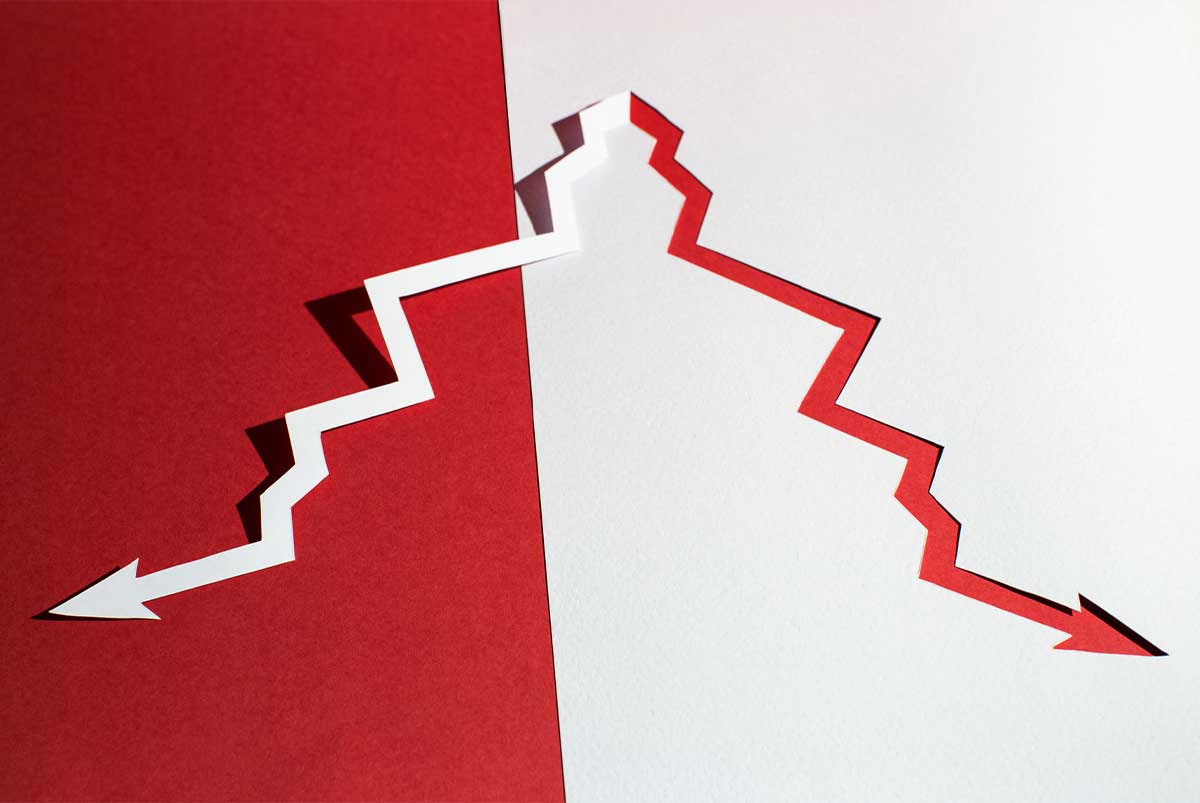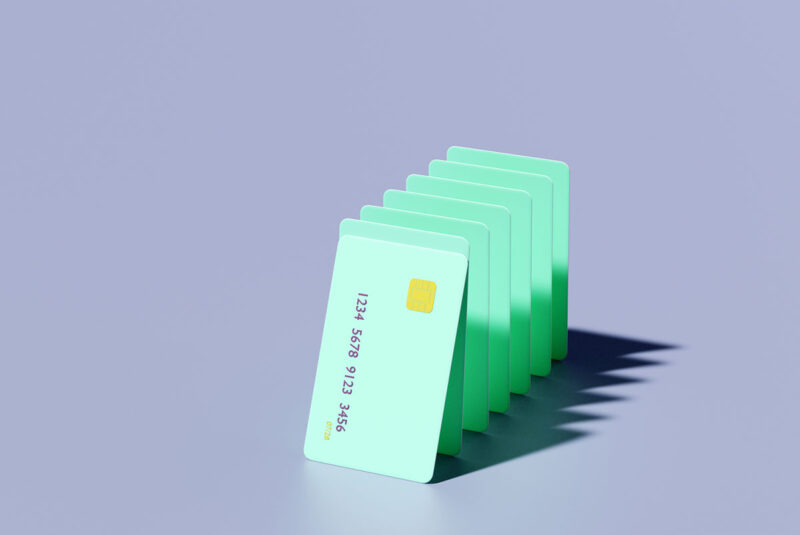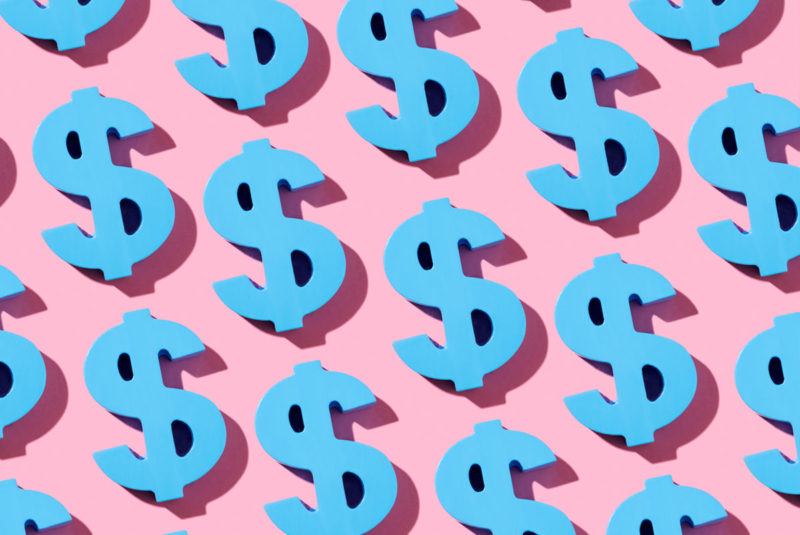One reason why debt can feel so overwhelming is that there seems to be so much of it! It’s like that crowded closet we don’t want to deal with. We recoil at the chaos and try to pretend it doesn’t exist. But debt – much like clutter – catches up to us eventually.
Like a complete closet overhaul, paying off debt can feel out of reach. But paying down debt with the right strategy can help you clear the clutter one step at a time.
The secret to facing our debt is to face our fears, embrace our inner Marie Kondo and be willing to give our loan and credit card debt the full KonMari treatment.
If you want to spark joy and finally get a handle on your debt, follow these seven tips to pay it down.
1. Organize: See the Big Picture
Start your debt reduction journey by creating an inventory of your debt so you understand the amount and type of debt you’re dealing with. Use your free credit report, your bank statements, credit card statements and loan statements (like your mortgage, student loan or auto loan) to create your inventory.
Be thorough and include all your debts (even debt you may owe friends or family.) For each debt, list:
- The name of the lender or creditor
- The type of debt (credit card debt, student loan, mortgage, etc.)
- The minimum monthly payment
- The current interest rate
- The balance due
- The fees
- The remaining length of the loan
Now you can organize your debt by loan amount, debt type or interest rates to get a good overview of what you owe. Use index cards, a handwritten table or a spreadsheet – whatever makes the most sense for you.
By the way, one helpful KonMari tip is to do this all at once. If you add pauses to the process, you may get distracted or give up too soon. Set aside a block of uninterrupted time and commit to an honest appraisal of all your debt so you can start making a plan to pay it down.
2. Prioritize: Know What Debt To Pay Off First
Once you’ve inventoried your debt, you may have more questions than answers, including:
- Should I pay my auto loans, student loans or credit cards off first?
- Should I focus on my high-balance or my high-interest debt?
- If a debt is past due or in collections, should I pay it off before my other debts?
We get closer to serenity when we know which debt to focus on first. While everyone’s debt looks different, use these debt mantras to guide your path to debt relief:
Let no debt fall through the cracks
Stay on top of your current debts and prioritize the debts you can control. Every late payment you make is another potential ding on your credit score. And a low credit score will make it harder for you to get new credit with better terms in the future.
If you have debt in collections, do your best to pay them off without falling behind on your other bills. Work with your creditors to bring any debt in collections out of collections – but don’t let them pressure you into paying those debts at the expense of your other debts.
Start with your highest-interest debt
Once you’re focused on paying down more of your debt, target your high-interest debt to save money on interest – that’s the avalanche method (more on this later).
Not sure where to start? Look at credit cards, lines of credit and unsecured personal loans. High-interest debts are usually unsecured (not backed by collateral). But don’t rule out secured debts because they can have high interest rates, too.
Focusing on high-interest debts can help you save money, not only in interest, but in fees that usually come with these types of debt – and usually add up quickly.
Don’t neglect lower-interest debt
You may decide to focus on paying down your higher-interest debt first, but your lower-interest debt still exists. Make sure you’re still making minimum payments on your lower-interest debt, too.
3. Strategize: Focus Your Payment Power
Now that you have a better picture of your debt, you can start building a strategy to pay it down.
Wondering how to pay down debt faster? It’s easier than you think:
- Give yourself an allowance: After you’ve met all your minimum monthly payments, use any extra money to create a monthly debt payoff allowance.
- Address one debt at a time: Apply your monthly debt payoff allowance to one prioritized debt account each month so you’re making more than your minimum payment. You can add the amount to your regular monthly payment or make an unscheduled extra payment.
- Regroup and repay: Once the prioritized debt is paid off, add the money you were spending on it to your monthly debt payoff allowance. Now you’ve got a larger pot of money to work with! Apply your newly increased payoff allowance to the next targeted debt.
With every debt you check off your list, you grow the amount of money you can apply toward paying down the next one. This strategy helps you pay off each debt faster than you would by making minimum payments.
Debt avalanche vs. Debt snowball method
There are two common approaches to paying down your debts using the strategy we’ve laid out above: the avalanche method and the snowball method. Let’s look at the difference between the two:
- The debt avalanche method: You pay off your highest-interest debt first – regardless of the balance. Once the highest-interest debt is paid off, start paying off the debt with the next highest interest rate. The avalanche method will shrink the amount of interest you pay overall.
- The debt snowball method: Start with your smallest debt balance first. Once the smallest debt balance is paid off, move on to the debt with the next smallest balance. You’ll pay more in interest overall, but you’ll build a track record of successfully eliminating debts. Watching balances drop to zero may be the incentive you need to stay on track.
Both methods are helpful in different ways. And whether you’re using the avalanche method or the snowball method, focus on attacking one debt at a time. Then use the extra money to power up your debt paydown plan.
4. Consider Debt Consolidation: Declutter Your Payments
When you consolidate your debts, you bundle all your monthly payments and turn them into a single monthly payment. Reducing the number of payments you make each month will reduce your risk of making late payments. Consolidating your debt can also help you get a better deal on high-interest loans if you can refinance to a lower interest rate.
Use a personal loan, a home equity loan or a balance transfer credit card to consolidate multiple debts into a single payment. Let’s look at how these options stack up against each other:
| Consolidation Option | How To Do It | Reason To Use It |
| Personal Loan | Apply with a lender (bank, credit union or online lender) for a personal loan with a low interest rate. | The loan may have a lower interest rate than some of your existing debts, and you’ll only be responsible for a single monthly payment. |
| Home Equity Loan | Apply with a lender for a home equity loan with a low interest rate. | If you have a lot of equity in your home, you can leverage it. You may be able to get a lower interest rate, and you’ll only be responsible for a single monthly payment. |
| Balance Transfer | Apply for a credit card with a low or 0% intro APR or no balance transfer fee. Bonus tip: Look for a card with 0% interest and no balance transfer fee to boost your payment power! | It may be easier to qualify for a balance transfer card than a personal loan or home equity loan. Use the card to transfer and pay off your consolidated balances, with no or low interest charges during the introductory period. |
5. Automate: The Art of Monthly Payments
If you’ve got bills with fixed monthly due dates, set up autopay. Just make sure you have enough money in your bank account to make your automated payments. Because guess what you don’t want to deal with while you’re doing your best to pay off debt: overdraft fees or insufficient funds fees.
And here’s another autopay bonus: Most lenders will let you determine when your payment is deducted. You can schedule payments after you receive your paycheck or whenever works best for you.
6. Refinance: Transform Bad Debt Into Good Debt
If you don’t like the terms of a loan, you may be able to change it. Refinancing your loans can be a powerful way to lower your monthly payments, free up income and get out of debt faster.
- Home mortgage refinance: Your home can become a valuable part of your debt paydown plan. Take advantage of lower interest rates and refinance your mortgage to lower your monthly payments.
- Cash-out refinance: If you have enough equity in your home, you may be able to take advantage of a cash-out refinance. It lets you borrow more than what you owe on your home. You can use the extra money to pay off higher-interest debts.
- Auto loan refinance: If your car loan is stressing you out, there are plenty of options out there to refinance your loan.
- Student loan refinance: Depending on whether you have federal or private student loans, you may be able to lower your monthly payments by refinancing, consolidating, entering into an income-based repayment plan or getting your loans forgiven.
7. Find a Helping Hand: Assistance Is Not Weakness
If you feel overwhelmed by your debt, you don’t have to shoulder the worry alone. Find allies to help you manage your debt. You may be surprised to learn how much help is available.
Talk To…
They may be able to help you with loan consolidation or loan modification options and financial counseling.
If you’re struggling to make your payments, talk to your lender. You may be able to negotiate better terms, or they may be willing to offer you some breathing room.
If you have a financial advisor, explain your situation and see if there are ways to lower your debt while sticking to your financial plan.
Your employer or union may offer a financial wellness program.
The National Foundation for Credit Counseling can connect you with a nonprofit credit counseling service in your area. They can help you organize your finances, work with your lenders to create a debt management plan and connect you to legal resources.
Spark Joy and Get Out of Debt
Paying down debt isn’t always easy. But with the right plan and the right mindset, it can be done.
Use options like consolidation, refinancing and autopay to make paying down debt easier. And don’t be afraid to ask for help if you need it.
Take a deep, cleansing breath. Open up a spreadsheet, declutter your debt, strategize and take your first step toward financial freedom.
The Short Version
- Like a complete closet overhaul, paying off debt can feel out of reach. But paying down debt with the right strategy can help you clear the clutter one step at a time
- Once you’re focused on paying down more of your debt, target your high-interest debt to save money on interest – that’s the avalanche method
- Use options like consolidation, refinancing and autopay to make paying down debt easier




